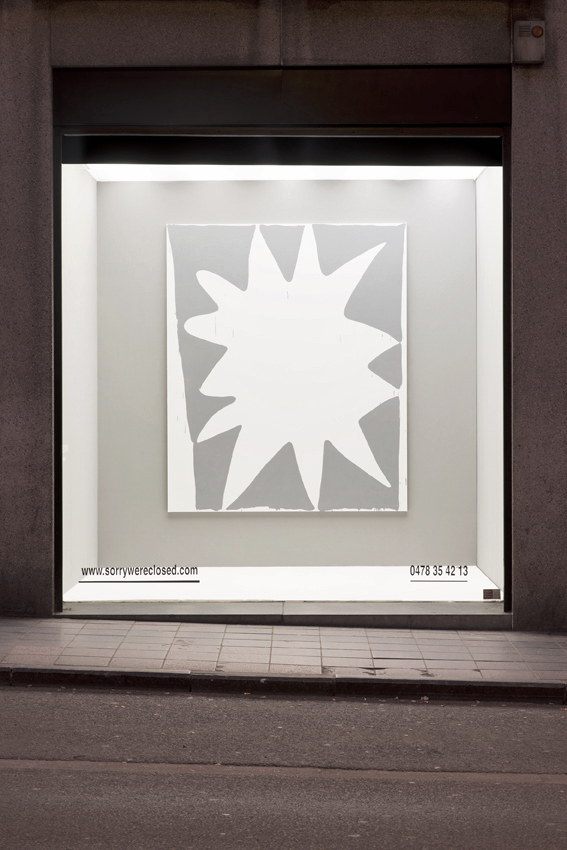
About
Amy Feldman
Grey Area
16.01.14 → 16.03.14
Amy Feldman composes striking images by employing a limited number of pictorial elements on the surface of her paintings. Simple yet acute gestures coupled with basic formal devices dovetail to create images that have a strong visual impact on the viewer. Feldman seeks a visual clarity that is at once profound and undercut by humor. This exhibition is comprised of four large sized paintings rendered in light and dark variations of gray. In their grand scale, the forms engulf the viewer: painting flirts with sculpture, entering the viewer's physical space. Feldman's work is also about picture making, as cartooned abstractions materialize on the surface and the integrity of the edge is questioned and repurposed.
In her paintings, Feldman's soft and drippy gray lines masquerade as hard edges, creating shapes and signs that melt in and out of legibility. Figure/ground relationships are complicated, as dark selects light and vice versa. Feldman's application of paint to surface appears quick and direct blunt but considered. There is an inherent anxiety in her paintings that complements and contradicts the ease with which her tough yet sensitive forms appear to be created. Her punctuated, icon like abstractions are derived from her drawing practice, and the same seemingly casual attitude is translated from drawing to painting. The images in her drawings, practiced and rehearsed many times over, are studied provocations, decisive and spontaneous fortuitous indicators for her paintings. Feldman reaches a desired balance in her work. Awkward yet poised, her paintings evoke a toxic classicism, stunning with their purity and imperfection.
Stephen Westfall writes in his essay "Tough Love", completed for Feldman's catalogue produced for this exhibition:There's a visual hit to our first encounter with an Amy Feldman painting, or better, a group of them. They telegraph their overall image structures across space like bold signage. Greenberg would have approved. Or, who knows? He might have found their traceries of the grotesque a bit icky: ok for Pollock, Louis, and Frankenthaler, maybe, but Feldman may just be a bit too cartoonal. For Greenberg, that meant Pop, "easy stuff" in his mind. But Feldman's stretched and pulled geometries hint at a darkness that her stark and high contrast figure/ground relationships don't dispel...her paintings know a lot, they have a lot of languages in them, and they let us know what they know with startling economy of means and anecessary theatrical grandeur.